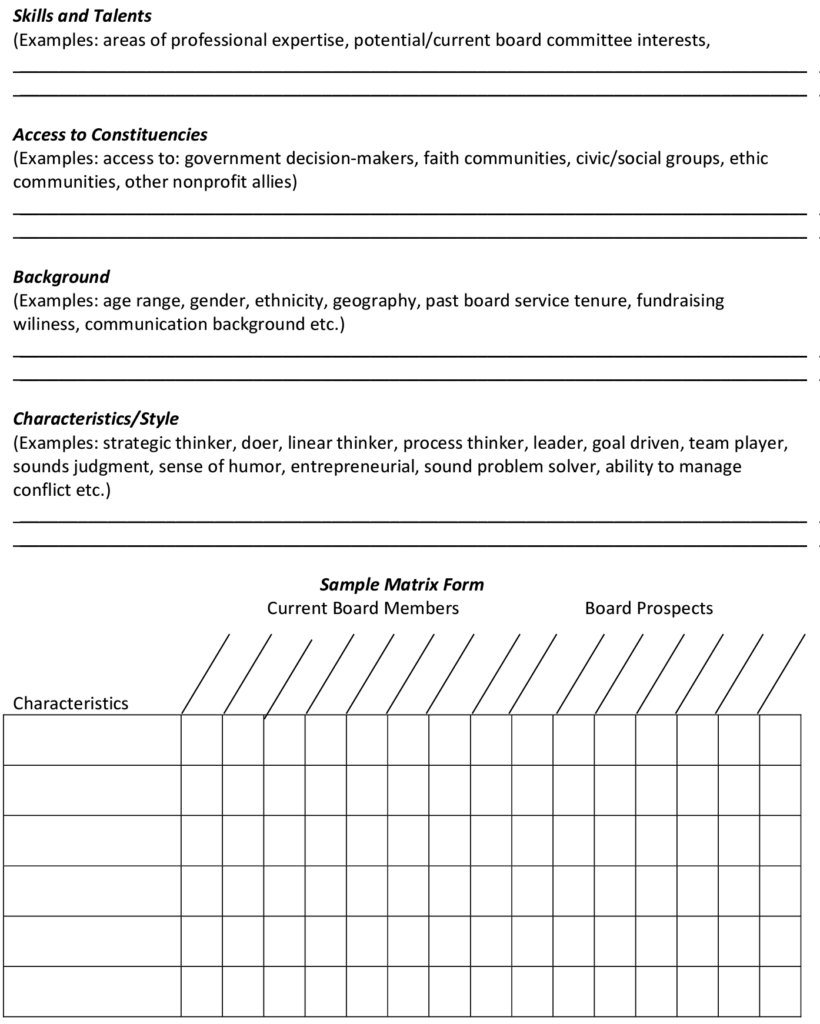

As your state nonprofit association, we are here to provide resources to strengthen your organization.
This tool can be used in a variety of ways to help the Board via the Board Development Committee to know “the right people at the right time” for board service. The key question to ask is “who needs to be in the board room over the next three to five years to help the organization meet its goals.”
A matrix is not simply a generic listing of characteristics, styles, backgrounds, etc., it is about being specific and aligned to the core purpose and values of the organization as well as clarifying what critical actions of the board need to be addressed by the board members based on the strategic and operating plan. The goal is to create a diverse mix of board members who together provide the wisdom and work to steward the organization’s goals toward excellence and mission impact.
There are many advantages of a board matrix including the ability to recruit beyond the “usual prospects” in the community; the ability to be strategically aligned in the organization; the ability to institutionalize succession planning in the organization; the ability to vet prospective board candidates through a standard process to ensure “the right people at the right time;” and to knowingly recruit not just people with interest, but people who will work to achieve the goals of the organization. A board matrix: is not a one size moment; it can be used for one of three things:
If you use the same matrix as always you will get exactly what you have – status quo. This is not necessarily a bad thing but also may prove to be frustrating for some who want to see change in diversity for example. Many organizations for example don’t want the status quo. They want to recruit people who want to take you into the future not keep you where you are. Be “on purpose” in your choices and your process.
Creating the matrix
Using the strategic plan, Core Purpose, Core Values and board job description as references, brainstorm all the backgrounds, current skills and talents, characteristics and work styles and access to constituencies that are needed in the board room over the next 3-5 years. Be as specific as possible. For example- if one of the goals is to raise more charitable money- think about the kind of person who will be the most helpful in this process- do you need someone with access to a new set of stakeholders? Or someone who has experience raising money from individuals? Or who has corporate contacts? Or who is detailed oriented? Or who is a visionary or a worker-bee? Etc.
Using the matrix
Sample Criteria for Board Composition
Derived from Strategic Plan, Core Purpose, Core Values, Board Job Description
